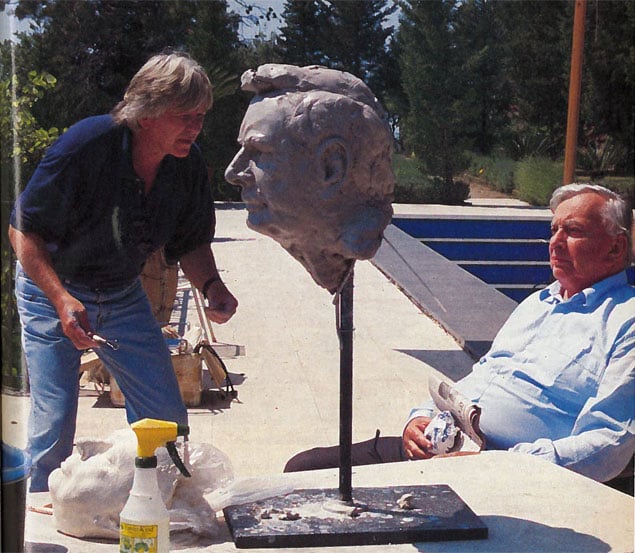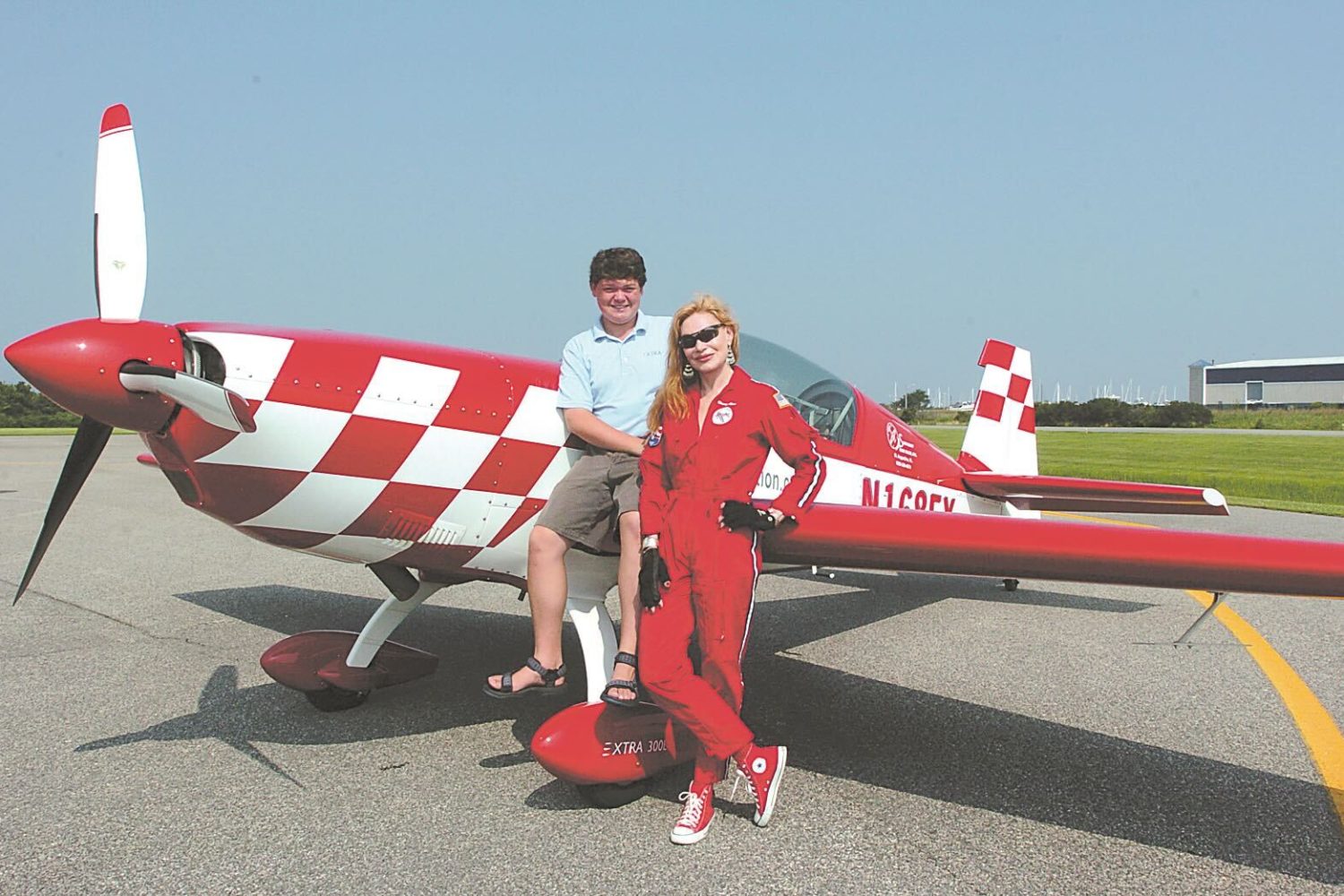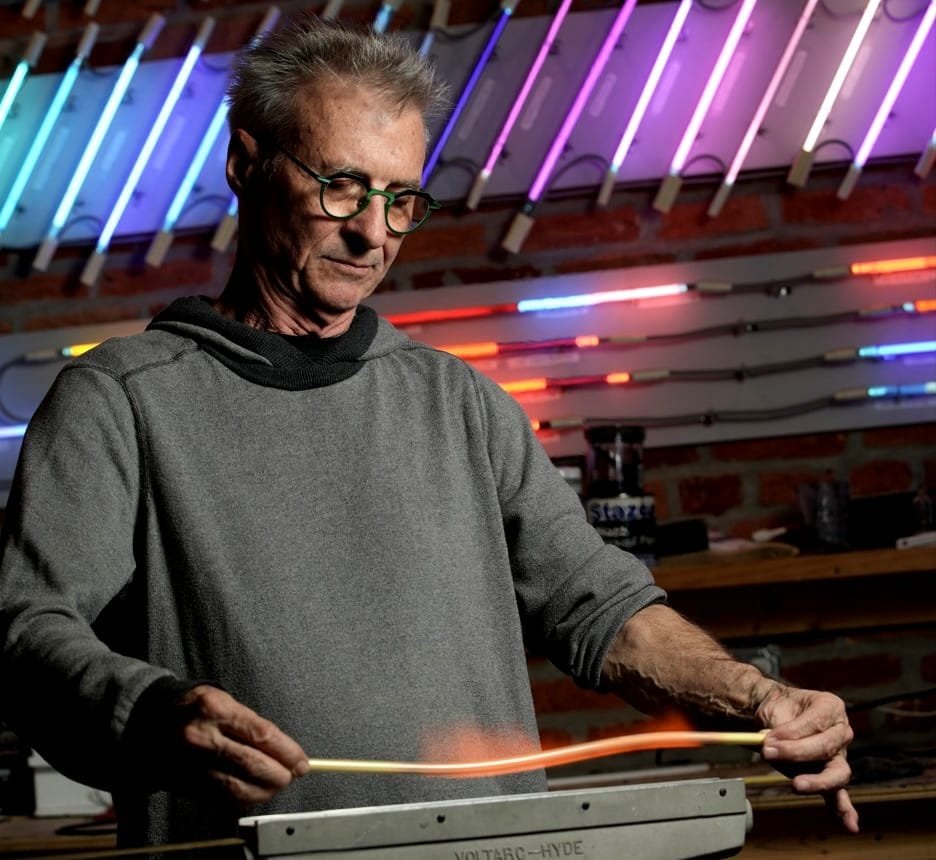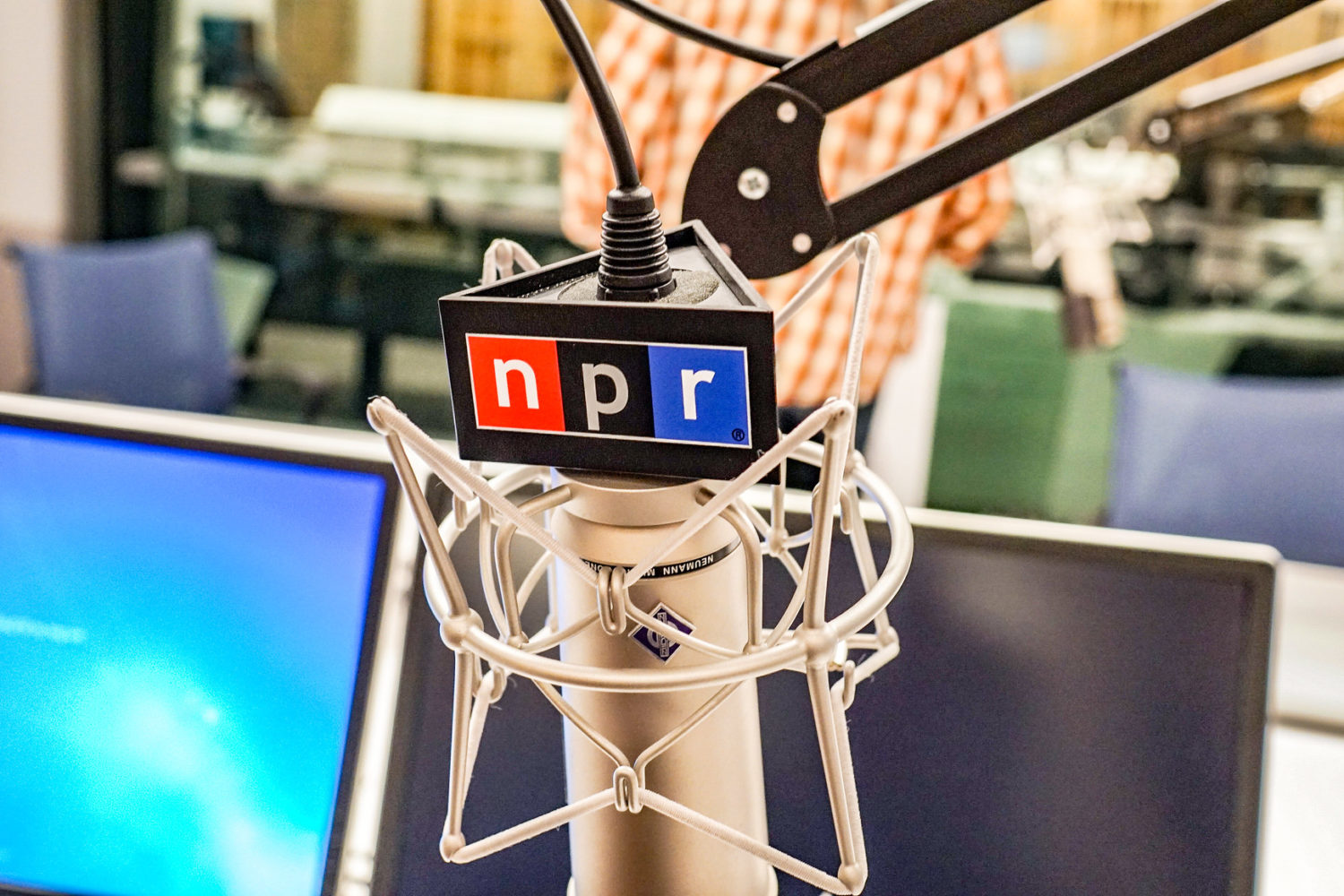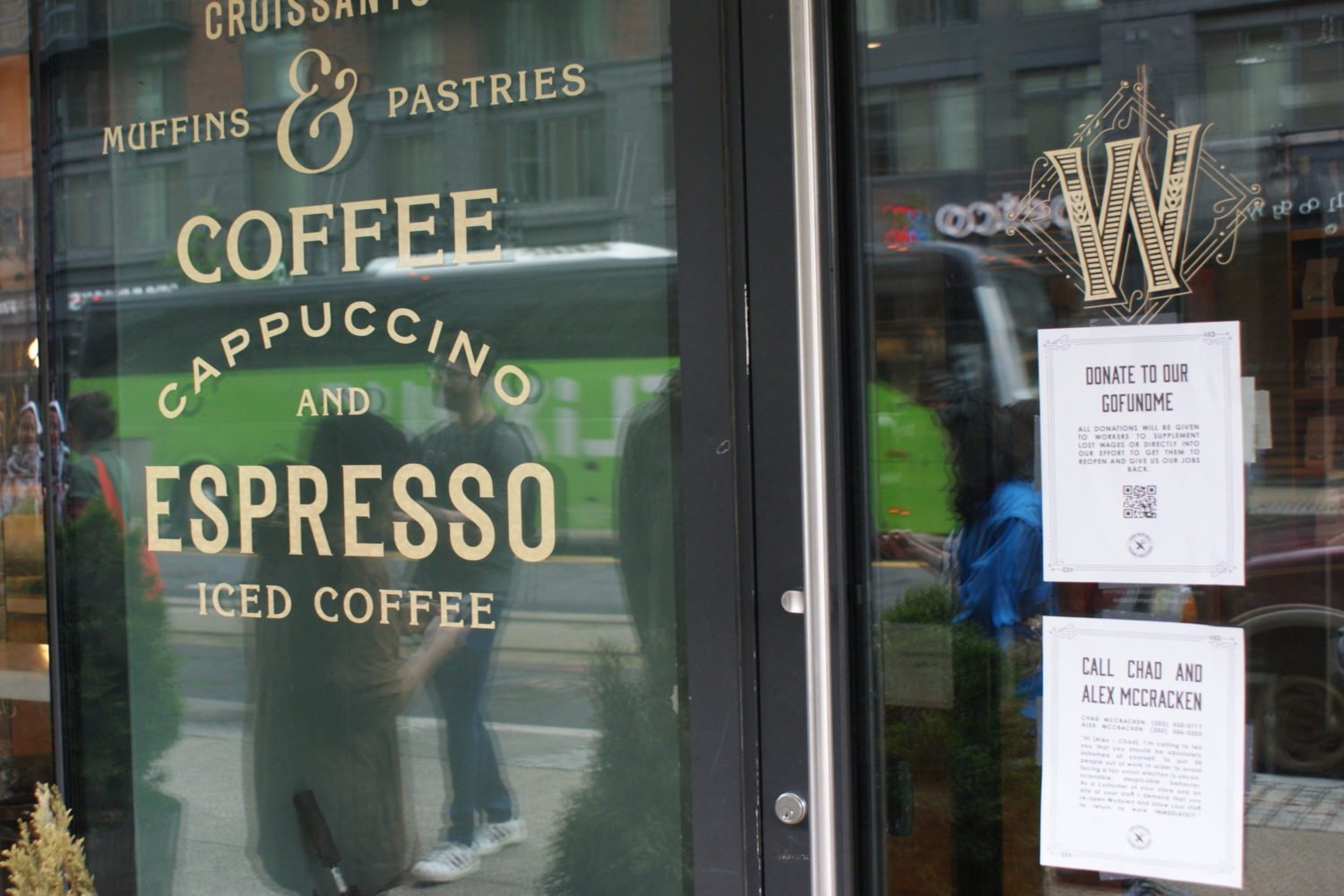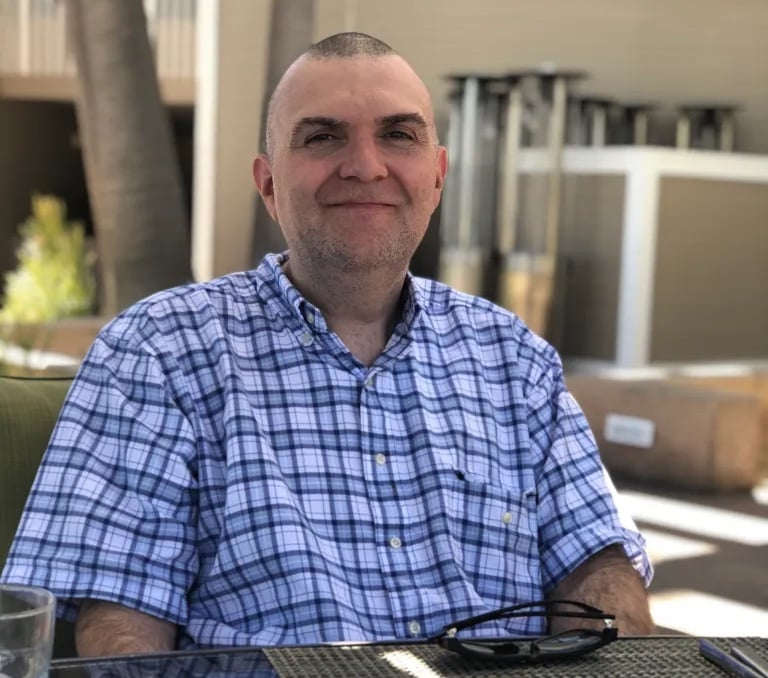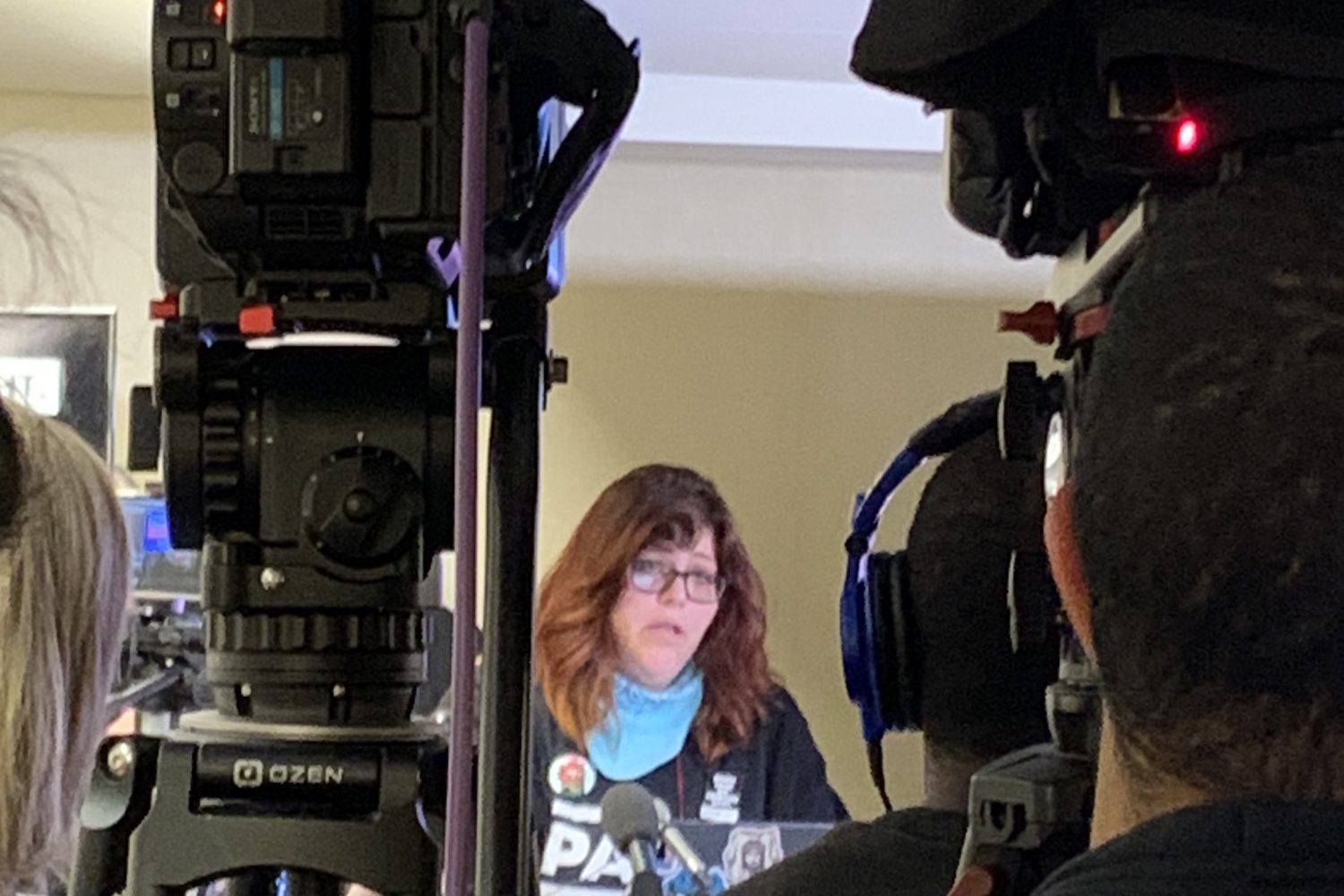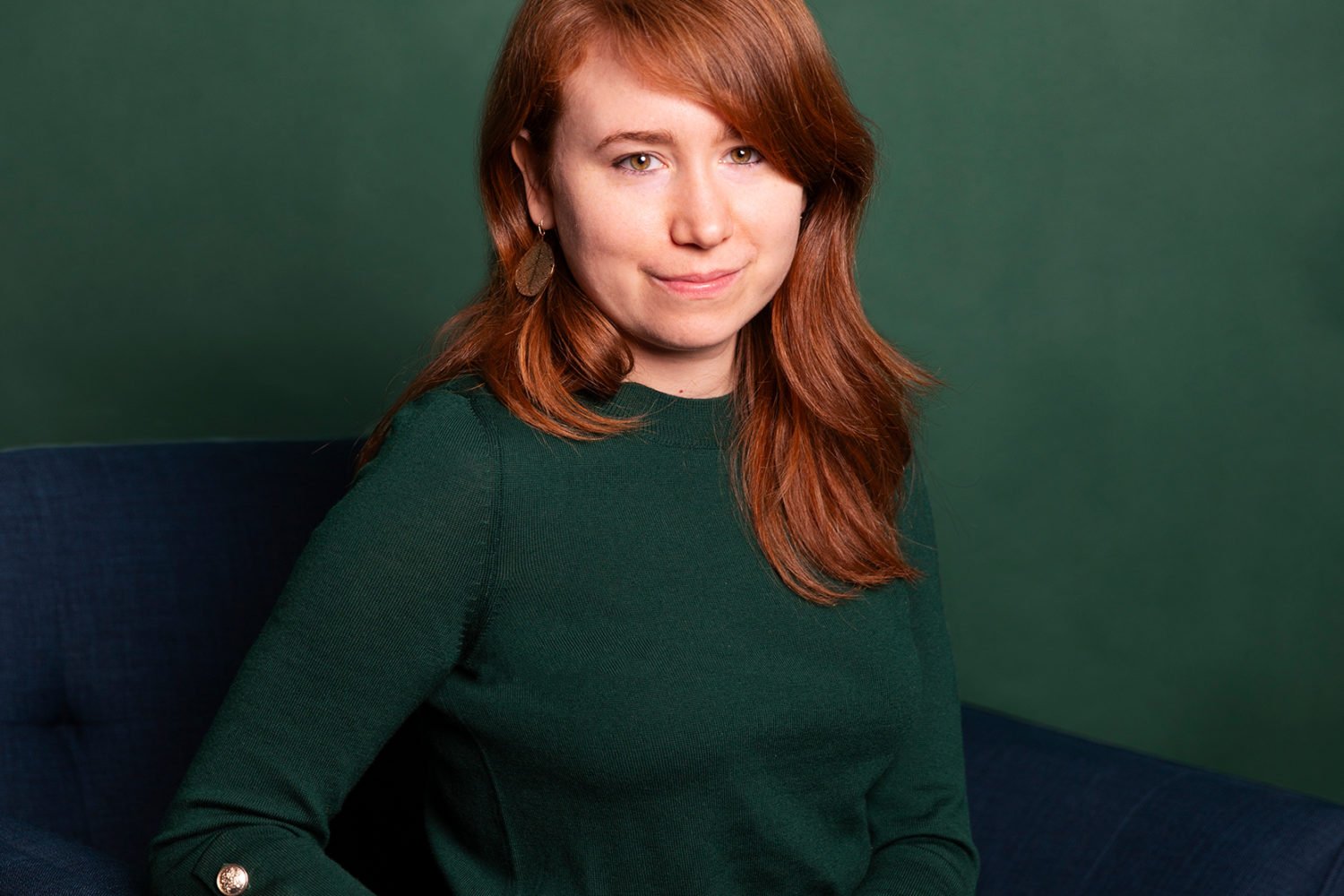When the April 22 New York Review of Books arrived, I immediately turned to an article promoted on the cover, “The Essential Gore Vidal.” Christopher Hitchens’s brilliant, insightful, at times downright worshipful essay entitled “The Cosmopolitan Man” was given something of a sour note: a drawing of Vidal by the artist David Levine. A master of the satirical form, Levine almost always livens up the pages of the often ponderous publication with his work. But there, staring out from page 29, was a cruel caricature of Vidal that, to my eye, was the visual equivalent of libel. The inflated, disheveled, ruined mansion of a man depicted was anything but the wise, witty, elegant, self-deprecating, and, yes, cosmopolitan teddy bear of a man of letters–and distant cousin on the Gore side–I had known for years.
My fax flashed across the Atlantic to Gore’s clifftop home in Ravello, Italy: “Dear Gore, I rather enjoyed the rich valentine Christopher Hitchens sent you in the NYRofB. (He really does want to be you when he grows up.) However, the unfortunate cartoon reminded me that your noble Gore head wants to be better remembered for posterity.”
No one had yet done a bust of Vidal, and no famous life is complete without one. We had discussed his sitting for me at some point, should occasion permit. Now there was a purpose.
My letter continued, “To that end, my plans to act on your invitation to come to Ravello are taking shape.” I wouldn’t need much time or space, I assured him. “I work rather quickly–and it’s not as if I haven’t been around Gore physiognomy all my natural life.”
He faxed back: “I’m working on a book. Come to Ravello in May.”
• • •
I generally wake up of a morning thinking myself a painter and spend the balance of the day in my studio trying to prove it. But I came first to sculpture. From playing in the mud of my Mississippi childhood to operating the foundry at Ole Miss, I have always been fascinated by the alchemy of sculpture. For a thing to be ephemeral wax one minute and immortal bronze the next is a kind of magic under whose spell I remain, and any occasion to practice it is welcome.
As I began to make my travel plans, I got a call from my friend Karen Thomas, whose company, Film Odyssey, makes documentaries. Her recent PBS American Masters program on Robert Rauschenberg is the best film bio of a living American artist I’ve seen. She had gotten wind of the trip and wanted to come along. The timing was serendipitous: She was producing a film about Isaac Stern and would be in Florence at the end of May to film an interview with Zubin Mehta.
After a flurry of faxes among Gore, Karen, and me, the way was clear for Karen and her crew to film the sitting in Ravello and capture the conversation between us. Things were starting to get interesting. After one of the most unpleasant Washington winters on record (weatherwise mild to fair, but socially and politically miserable), the prospects of a week in Italy with a challenging project and in the company of the Oracle of Amalfi quickened my pulse.
• • •
Eugene Luther Gore Vidal Jr. grew up in Washington in the household and under the influence of his maternal grandfather, the blind senator from Oklahoma, T.P. Gore. The late Washington raconteur Jack Skuce told me that Vidal and Virginia’s future senator John Warner were the bullies of St. Albans School, pushing the younger boys off their bicycles–crucial early training for both, given their subsequent careers in the arts and politics.
Out of the service in 1946, Gore published one of the first war novels, Williwaw, based loosely on his experience as first mate on an Army transport ship. This precocious act was followed by a prodigious outpouring of fiction over the next five decades–some 23 novels that exhibit a range, imagination, invention, and scholarship unmatched by anyone of his generation. His series of historical novels set in America–Burr; Lincoln; 1876; Empire; Hollywood; Washington, DC; and the current work in progress, The Golden Age–will be read as the definitive biographical narrative of our young nation.
While finding time to run for the House from New York state and the Senate from California, Vidal has contributed to the public discourse some 200 essays, half a dozen plays, a memoir, short stories, film and television screenplays–Ben Hur, Suddenly Last Summer, Visit to a Small Planet, and The Best Man, to name a few. He has of late been in demand as an actor, appearing in the films With Honors, Gattaca, and Bob Roberts. And then there have been his televised skirmishes with the likes of William F. Buckley, Norman Mailer, and Truman Capote.
Gore’s life has not been all work and no play. He has traveled to every place on the planet, experienced lots of high living and some notoriously low, and since the mid-’60s spent most of his time in the baronial splendor of self-imposed exile in Italy with his great good friend, Howard Austen.
Their 12-acre estate and house, La Rondinaia–which means Swallow’s Nest–hangs from a cliff high above the Mediterranean. Homer’s hero Odysseus heard the sirens’ call not far from here. This perch gives Gore a certain perspective on his native America. Of his homeland he has written, “Love it or loathe it–you can never leave it or lose it.” Nor it you, as it happens. Gore Vidal will take his final rest in Washington’s Rock Creek Cemetery, an eventuality that devoted readers hope will occur in the very distant future.
All of this and more is chronicled in Gore Vidal: A Biography by Fred Kaplan, just out from Doubleday. Professor Kaplan warmed up for the task with the lives of Thomas Carlyle, Charles Dickens, and Henry James, which only partially prepared him for Vidal’s boundless appetites and his stamina in pursuit of them.
The time for my departure was drawing nigh. I planned to take everything over with me–clay, armature, modeling tools, plaster, the works. As I packed, it occurred to me what a nightmare awaited should some zealous airport security guard decide to take a peek at the contents of my portable sculpture studio. Such an inspection would reveal several feet of galvanized pipe, rolls of copper and aluminum wire, and 40 pounds of clay wrapped in cellophane that looked for all the world like the plastic explosives one sees in the movies. Then there were the Ziploc bags filled with fine white powder. It was, of course, plaster of Paris, with a street value of $12.75. But my collection of ordinary art supplies could easily be mistaken for a narco-terrorist starter kit. I sealed the box, labeled it FRAGILE–HANDLE WITH CARE, and hoped for the best.
On the Swissair flight over, I sketched, wrote in my journal, and looked at the work of Rodin and Manzu for inspiration. Changing planes in Zürich, I stopped by a duty-free shop and picked up my ration–two bottles–of single-malt Scotch. The Macallan had flowed freely on my last visit to La Rondinaia. Well-bred Southern boys don’t turn up at someone’s door without a proper gift. It should be, I was taught, a thing near and dear to their host’s heart.
My bags collected at Rome’s Leonardo da Vinci airport, I was headed for the exit when a bandoliered carabiniere with a contraband-sniffing dog approached. The pair veered off at the last moment in favor of some backpacker’s gamier gear. I quickly cleared customs, then rented a car and a mobile phone, adding a new word to my meager Italian vocabulary: cellulari–the small electronic communications device permanently attached to the ear of most Italian men under the age of 50.
From the airport I headed southeast on the A1 Auto Strada. Planting myself in the left lane with lights flashing, I fairly flew through the lush fields and hillsides of Latium and Campania. I passed signs for Hadrian’s Villa and Castelli Romani. Off to the left was magnificent Monte Cassino; an hour or so later Mount Vesuvius appeared, shrouded by storm clouds. There were exits for Pompeii and Herculaneum and, at last, signs for the Costiera Amalfitana. I crossed over the Lattari mountain range, started down the winding incline, and got my first glimpse of the wine-dark Gulf of Salerno.
This spectacular landscape is for all intents and purposes vertical–sheer cliffs rising up from the sea, belted with ancient terraces of olive, orange, and lemon orchards interspersed with vegetable gardens and vineyards. Roses and wildflowers abounded alongside the last of the season’s irises and wisteria.
I wound my way along the corniche and climbed the hairpin curves up to the hill town of Ravello, former home to Charles of Anjou, Richard Wagner, several Popes–and Gore and Howard since 1972. I parked and began lugging my load across the Piazza Vescovado toward the Hotel Rufolo and La Rondinaia. One enters Gore’s property through a series of gates, then proceeds through a dark alley of chestnut trees that opens to breathtaking views of Amalfi’s coast, its hill towns, and the terraces that cascade down to the sea.
The light was fading, and I was exhausted. I abandoned my luggage beside the pool, stumbled up the steps toward the villa with my single-malt offering in hand, and entered into the sacred ritual of cocktail hour at La Rondinaia.
• • •
Gore and Howard were in fine form, regaling me with stories of the wettest, coldest winter in memory. The heating system had gone out. Pipes had burst. The house had been a virtual construction site–La Niña was to blame. But La Rondinaia, one of the world’s great private homes, looked fabulous to me.
Howard asked if I’d had any trouble finding the place this time. “No,” I said, “but I need to work on my Italian.”
“Oh, really?” he deadpanned. “I can’t wait to meet him.”
Karen Thomas and the Film Odyssey crew were staying nearby at the Hotel Marmorata. She and Peter Nelson–photographer, cameraman, and gourmand–had flown over from the States and hooked up with their sound man, Marco Fiumara, a suave young Roman with requisite cellulari. Marco would prove an able interpreter and fixer, smoothing the way with officials, getting permits, securing parking in the shade on the piazza, and most important, helping with menu selections.
At the Ristorante Victoria, where we all gathered for dinner, the staff made a fuss over “Maestro Vidal,” a scene repeated often during my stay. Effusive greetings and gestures of deference were returned by an indulgent and polite Vidal. Bowing slightly at the waist, in fluent and precise Italian he would praise Italy for its timeless hospitality, warmth, and good will. After ample quantities of Positano Vino Bianco, pasta al vongole, fruiti di mare, and more laughter and lies than are healthy in these climes, we swore our fealty to art, repaired to our quarters, and lapsed into the arms of Morpheus.
• • •
Up early, jet-lagged and a little hungover, I fortified myself with cups of espresso and the International Herald Tribune. The film crew fanned out to scout for location shots; I went to collect my luggage and find a place to work. The portable atelier was right where I’d left it–poolside. Here were superb views, cool breezes, tables, chairs, umbrellas, electricity, and a full bar. We weren’t likely to do better.
The modeling of a portrait head is pretty straightforward. Earth’s own malleable clay is applied to a rigid armature and then shaped and formed by addition and subtraction. Details and textures are achieved with a variety of tools, but none is better than the fingers and thumbs of the sculptor’s hands. There’s something timeless, even biblical, about forming the image of man from clay. For me, it is a struggle against the forces of nature in hopes of reaching some acceptable and resonating compromise with the materials to make the ephemeral definitive. When the modeling is done, a plaster impression is taken and the original destroyed.
With the deck of the pool converted to an alfresco atelier and TV studio, the film crew and I were set: It was time for lunch. At the Ristorante Villa Maria there were four-star views and food to match. Some two hours and several bottles of wine later, we returned to the makeshift studio. I was determined to make this whole multimedia circus as unintrusive as possible, given that Gore was deep into the next–last, he says–installment of his ongoing saga of America.
Vidal is a disciplined artist. He works every day for hours, writing in longhand on yellow legal pads inside a beautifully appointed, photo-filled, book-lined study with fireplace and a terrace that overlooks the sea. On a low table in front of a sofa is, among other charged objects, a life cast of Abraham Lincoln’s right hand holding what, according to legend, is a broomstick.
Vidal’s work in progress, to be called The Golden Age, follows the novel Hollywood and deals with, among others, FDR, Eleanor, Truman (the President, not Capote), World War II, and the beginnings of the Cold War.
We hadn’t been poolside long when Gore ambled over from the house, resplendent in blazer and open-collared blue shirt. The late afternoon light was warming everything up. Time to go to work.
Vidal has a fine patrician head with high cheekbones, a broad forehead, and a full crop of hair that at 74 shows few signs of thinning. Most prominent is the unmistakable Gore nose. It’s there in photographs of his ancestors, especially his grandfather, and we see a version of it on the current Vice President. There are distinctive indentations–dimples, if you will–above the eyes, under the cheeks, and on each side of a full, expressive mouth, around whose corners constantly plays a) a sly, mysterious smile, b) a dismissive smirk, or c) a cynical sneer, usually accompanied by an arched brow, a stinging verbal slap, or both.
As I ran my hands over his face to get a feel for the bone structure, I told Gore how an aging and nearsighted Auguste Rodin often kept a studio of young nude models moving constantly in front of him. He would rush from one to the other and probe their nakedness, and then return to the clay with the warmth of their flesh still in his hands. Vidal raised an eyebrow and did one of those things with his mouth. It was, I believe, option a).
For the better part of an hour I worked while he laughed and gossiped about family and friends, living and dead. Gore is an accomplished mimic. We were as likely to hear the voices of Eleanor Roosevelt, JFK, Truman (Capote, not the President), or “the Glorious Bird”–the evocative name he coined for Tennessee Williams–as that of our host.
• • •
There are few topics on which Gore’s discourse does not enlighten, charm, or challenge conventional wisdom. He is very plugged into the US political and social scene. But on his own terms.
“If I read the Washington Post and the New York Times every day,” he told me, “I’d be so mad I couldn’t get any work done.” The Ravello grapevine, an international network of sources, provides a steady stream of mail, faxes (e-mail is seldom checked), and phone calls.
One evening drinks were interrupted by a ring. “Pronto. Si . . . si. . . . Ciao”–and laughter as Gore hung up. “Gianni Agnelli is having dinner in Ravello,” he explained. With David Rockefeller, it turned out.
One piece of correspondence Gore shared with me was chilling–a surprisingly thoughtful letter from Timothy McVeigh on death row. He had admired a recent Vidal piece on the systematic dismantling of the Bill of Rights and America’s gradual transformation into a police state.
Gore generally approves of the Clintons’ time in office. He hosted a smart luncheon for Hillary a few years back at La Rondinaia. “She wanted to know all about Jackie,” he recalled. As for l’affaire Lewinsky, it would be the height of hypocrisy for Gore Vidal to castigate anyone for sexual acts between or among consenting adults.
His approval for Vice President Gore is, however, on hold. Vidal has often said that the family is “overdue for a president.” Given that he is the nation’s biographer, and cousin Al is making a serious run at that office, it seems inconceivable–but the two have never met. Intercessions by friends of both camps have proven unproductive. Vidal’s quip, “I’ve met enough vice presidents,” hasn’t helped, and neither have his allegations that the VP suffers from occasional bouts of impaired veracity.
I grew up knowing pride was always at war with principle in the Gore character, and that any slight was not soon, if ever, forgotten. It seems that early in his political ascendancy, young Albert Gore Jr. was sent letters of congratulations by a distant cousin, the famous novelist Gore Vidal–correspondence that, if received, went unanswered.
• • •
I began to grapple with the head’s proportions, to add clay, take some away. I pushed, pulled, and poked at the mass until a likeness began to appear, and then I stopped. Hemingway said he always quit writing when the work was going well, so as to have something to return to the next day–sound advice that applies to the plastic arts as well.
Gore got up and started for the house, inviting us all back to the terrace for more single-malt therapy.
Before covering the head in plastic for the night, I backed away and took a long look in the late light. I compared the features in clay to a life mask that had been made of Gore earlier in the decade. These were the same familiar physical characteristics I’d seen in aunts, uncles, my grandmother and mother, and most recently among the congregation of a Methodist church in Webster County, Mississippi, where the Gores gathered to bury one of their own. This same profile–the cheekbones, the prominent forehead, the inevitable nose–are all part of the Gore genetic imprint.
Vidal’s grandfather, Thomas Pryor Gore, and my maternal grandmother, Mary Elise Gore, were first cousins in the long-ago Mississippi of their youth. “Mary,” as we children called her, often recounted how the young T.P. lost his sight in two separate accidents and how in 1894 he left Mississippi for greater political opportunity in the West. Later, as Oklahoma’s first senator, T.P.’s accomplishments and eloquence were legend in our family, as was the rise to literary fame of his grandson.
At our first meeting, I introduced myself to Vidal as one of his countless Gore cousins. He sized me up, smiled, and as much in sympathy as recognition said, “You do bear the mark of our clan.”
• • •
Next morning: more coffee on the piazza and bad news in the Herald Tribune–bombs and atrocities in Kosovo. In Ravello, it was back to work.
When I unwrapped the sculpture, yesterday’s dazzling likeness was but a faded memory. The features were distorted, elongated, as though the ghost of El Greco had given everything a good stretching. Gravity was the culprit–the dense wet clay had sagged. I began to knock the clay back into place roughly, slapping cheeks and chin with the heel of my hand. Gore, on his way to town, stopped to watch. Detecting a slight wince, I asked if he was experiencing a sympathetic reaction.
“Numbness,” he said. “I don’t feel a thing.” As he strolled off he said, almost as an aside, “The eyes are too close together.”
Much banter followed as to where the inevitable inbreeding had taken place, in the Vidal family or the Gore. The sculptor’s plight is not unlike that of the cosmetic surgeon: We aim to please.
With the gaze corrected and the face lifted, the clay Vidal was back to its old self. I have since learned from Kaplan’s biography that the young Vidal was an accomplished painter and sculptor, a talent abandoned but not forgotten.
• • •
One of the axioms of Modernism is that all art is essentially about other art. It’s not much of a stretch to fit my quest for the head of Gore Vidal into the rule.
The life cast of Lincoln’s hand in the study had been much on my mind, as had the life mask of Gore’s face that was proving so useful to me. The mask had been a gift from George Plimpton. The Santa Fe artist Willa Shalit (Gene’s daughter) has made a career of casting the notable and not-so. She’s done more than a thousand faces, from Zubin Mehta to Muhammad Ali, with five presidents thrown in for good measure. Plimpton commissioned Willi to come to Rome in 1992 and fix Gore’s visage in plaster.
The origins of casting from life go back to ancient Egypt’s Middle Kingdom. The Victorians liked taking impressions of the Empire’s monuments that were too large to be transported back to the British Museum. The whole business got something of a bad name during the 1960s when a gaggle of groupies calling themselves the Plaster Casters applied their cold craft to the genitals of rock stars. The whereabouts of these cultural icons are unknown.
I couldn’t contemplate Mr. Lincoln’s firm purchase on his broomstick without thinking how different our ghastly Civil War might have turned out had he spent more time manipulating that lever and less those at the War Department. But alas, I was getting too close to my subject. That’s just the kind of thought that would have popped into the pretty head of one of Vidal’s greatest inventions, Myra Breckinridge.
Over more cocktails, I proposed to Gore that we make a life impression of his right hand holding something only slightly less Freudian than Mr. Lincoln had–say, a lemon from Vidal’s own grove. He was game, and before I left, we did.
• • •
I spent the third morning applying the finishing touches. The sculpture had become heroic in scale, which seemed fitting. I was striving now not for anatomical correctness but for a kind of spontaneity in the modeling that I had achieved but was in danger of losing. It is in my nature to overwork a thing, and I was just about to when Gore emerged from the chestnut trees with the day’s mail. The film crew swung into action.
I told Gore that if he would spare me a little time, I could finish. As I worked, he and Karen talked on and on about New York in the 1940s and ’50s, the early days of live television, Norman Mailer, Tennessee Williams, Truman Capote, and Gore’s aborted dance career. Karen asked about the marriage of her next subject, Isaac Stern, to the dancer Nora Kaye. “I was at the wedding,” Gore recalled. “Isaac and Nora looked as though they needed to be introduced to each other.”
It was all coming together now. I held up the mask and compared it to the clay and then to the man. There were many similarities and some disparities. Gore: amusing, animated, and very much alive. The life mask: glaringly white, every pore in place, but for all its accuracy, lifeless and pale. The portrait fell somewhere in between–into what Robert Rauschenberg calls the “gap between between life and art,” I hoped. One never really finishes a work of art, it’s just abandoned. It had reached that definitive state of incompleteness; I could do nothing more than ruin what was done.
I thanked Gore for his indulgence and hospitality. He rose to leave and walked slowly and deliberately away from us toward La Rondinaia.
“Cocktails at the house,” he said over his shoulder. “And dinner tonight at Zacharia.”
• • •
Gore will be in the States in November for a bit of eye surgery–“Not cosmetic,” he assures–and to finally accept his election to the American Academy of Arts and Letters. Initially elected decades ago, he demurred: “I’m already a member of the Diners Club.”
He is also more than a little interested in the public reaction to his official biography. I asked if he planned to read it. “Only for libel,” he replied.
Much is made in Kaplan’s big book not just of his but of his entire generation’s fondness for drink. Late of an evening at La Rondinaia, as one bottle of Scotch gave way to another, my tongue thickened and my words began to slur. But Gore, the old pro, grew more expansive, lucid, and articulate, coming up with extraordinary political and literary associations and recollections. Or so it seemed.
Next day he lamented, “My liver is about gone, I suppose.”
Maybe so, I thought, but not the mind.
• • •
I carefully hand-carried the still-wet plaster molds on the plane to Berlin and then back to my McLean studio, where they now lie curing in a corner. This winter I will cast them in wax, as I have Gore’s hand, and make any necessary alterations before transporting the positive wax impression to Baltimore’s New Arts Foundry for transformation into bronze.
Then Gore Vidal’s head, like his work, will belong to the ages.
This article appears in the November 1999 issue of The Washingtonian.

